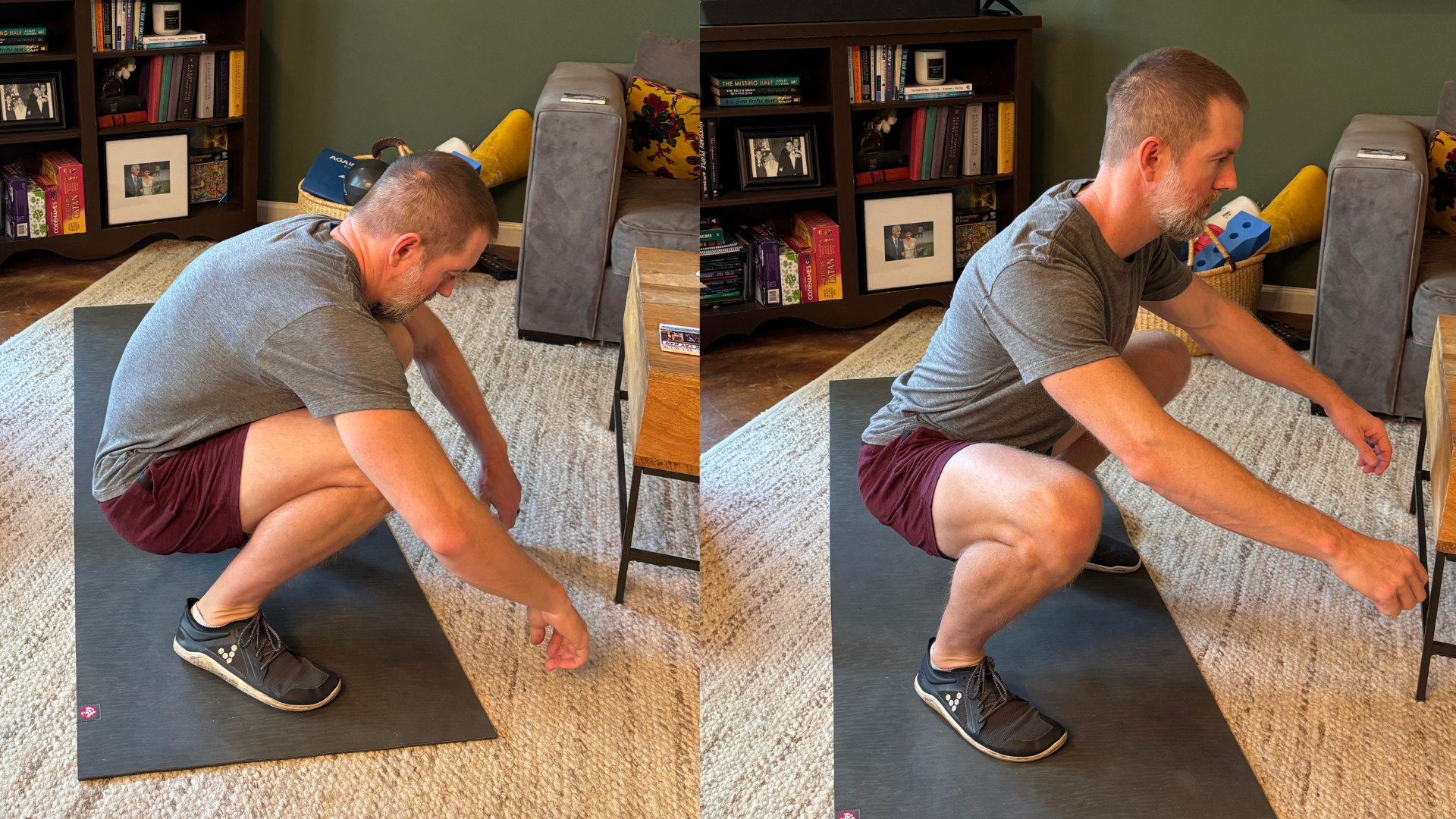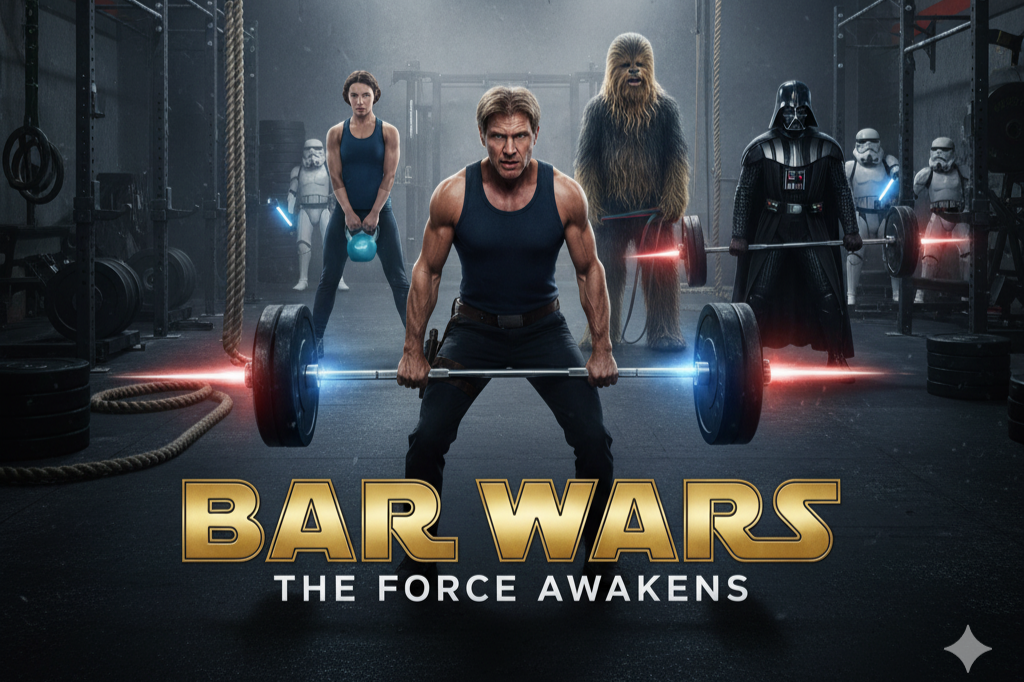What's On My Mind - November 2024
What’s On My Mind
What’s On My Mind
A Timeless Exercise Philosophy
This Month’s Health Challenge
Limit Screen Time (And Get Bored)
What’s On My Mind
A Timeless Exercise Philosophy - By Kyle Ligon
A major goal of The MovementLink Method is to make sure that as we help everyday people thrive in their lives, it comes with a perspective on self-improvement that aims to be universal and timeless. We realistically understand that at least some of the methods we have selected for use today will be obsolete at some point in the future. When new research, technology, equipment, supplements, medicine, etc. enter the market, the foundation of your journey should not be uprooted. Instead, your framework and understanding of your journey should account for these inevitabilities, so you can continue to upgrade and adapt the methods you choose to use along with the world around you. This perspective will not only add structure to your journey today, but will help integrate the most up-to-date strategies and weed out solutions that don’t holistically fit with the life you want to have in the future.
All self-improvement roads lead to the interconnectedness of our mind with our physical bodies. Improving and maintaining our physical health not only increases our energy levels, improves our immune system, and expands the physical options we have in our life, but it also improves productivity, brain function, and the symptoms of depression, anxiety, and addiction. Additionally, adopting, integrating, and sustaining healthy habits is without much substance if we are also not simultaneously prioritizing mental growth. Neither the mind or the body can thrive without the other.
For millions of years, our bodies have evolved while exposed to a range of physical, environmental, and mental stimuli and stressors and, in response, our bodies now use these as triggers to activate and deactivate genetic pathways, release hormones, and motivate us in ways that promoted survival, recovery, and adaptation for the vast majority of our existence. Throughout our journey, these abilities we have developed have allowed us to endure diverse climates, environments, and situations. We have developed brains capable of innovations that give us more control over how we experience these things, but these innovations have come with an ironic catch - the more technology we develop, the less our body understands the world in which we live. Consciously we can understand our reality, but our bodily processes react to our world more like cavemen who were frozen and awake in the future.
Technology advancements have created a large mismatch between the amounts and types of stimuli and stressors in our modern lifestyles and what our brains and bodies are evolutionarily used to (Supernormal Stimuli). Our body evolved to use a wide variety of different stimuli and stressors that organically occurred in our pre-technology lives as triggers, not just for knowing what to adapt to, but to set in motion normal bodily processes. For example, before light bulbs, high amounts of blue light exposure only came from the sun. Our body developed many start-of-the-day and end-of-the-day processes that get triggered as the amount of blue light increases and decreases, like when the sun rises and sets. These days however, because of light bulbs, we can continue to be exposed to high amounts of blue light long after sunset. Some strategies that have worked for us for practically all of our existence are being foiled.
As technology rapidly advances and integrates more seamlessly into our lives, it raises a critical question: what stimuli and stressors are currently essential for us to thrive in the life we want to live? As we inevitably embrace technology that changes our lifestyle faster than our bodies and minds can evolve, it is imperative that we additionally implement supplemental strategies into our lifestyle designed to fill the gaps. For example, a formal exercise program, at its core, is just a supplement for the amounts and types of physical activity that no longer organically occur in our lives.
Because self-improvement is a lifelong pursuit, we embrace the reality that, especially with technology, the world is going to change around us. Things we believe are true today may be proven wrong in the future. Strategies that work today, may become obsolete or ineffective in the future. How we perceive ourselves and who we want ourselves to be should evolve over time. We must stay open-minded and relentlessly question and upgrade our thinking to ensure our body is getting the stimuli needed to support the mind and thrive.
The MovementLink Method:
Define who we want to be. The more time we spend acting like that person, the more we become that person and the more we thrive.
Based on the most current information, define what we believe are the optimal stimuli and efforts required to support being that person.
Identify which of these stimuli and efforts are under-occuring, optimally-occuring, and over-occuring organically in our lifestyle.
Strategize, plan, and commit to habits and processes that optimize our exposure to what is needed to grow into the person we want to be and live the life we want to live.
Review results, processes, and upgrade our lifestyle.
We want you the get results as fast as possible - this is how you do it:
This Month’s Health Challenge
Limit Screen Time (And Get Bored) - By Kelly Dodds
Over the past couple of decades, screen time has become a more and more relevant topic since our digital lives revolve around computers, smart phones, TV streaming services, and video games. It’s not easy to find the most accurate statistics, but analyses show that the average American adult spends between 7-12 hours per day on a screen. You’re reading this on a screen right now :)… which wasn’t even an option for people just a couple of generations ago. Our modern digital lives have brought us amazing opportunities, but also comes with responsibilities.
Screen time is correlated to sedentary time, since it’s hard to be active and look at a screen at the same time– which impedes our daily productivity and non-exercise activity (NEAT - September’s Health Challenge) that boosts our health. Not only is screen time an opportunity cost to actively spending our time doing stuff, spending “too much” time on screens has been associated with many negative health risks such as excess body fat, poor sleep, dementia, stroke, depression, Parkinson’s, and poor eye health. Unfortunately, studies are still fairly limited regarding all the health implications of screen time and how much screen time is “healthy” versus “unhealthy.” Though, some experts say that more than 2 hours of screen time outside of work each day is too much (i.e. leisure scrolling, shopping, social media, TV series, movies, reading, games, etc.).
Another implication of spending too much time distracted by a screen is a lack of boredom. It’s easy to fill our spare time entertaining ourselves with our phone, TV, or a video game and avoid sitting around being bored. Generally thought of as an unpleasant emotion, boredom has received more attention in research studies lately. Excessive boredom, for instance, a monotonous job, a jail cell, or being bedridden, is known to increase depression & neurodegeneration and reduce life expectancy. However, some boredom is actually shown to be healthy for us.
Research has shown that boredom can be a source of creativity and innovation when our brains are more likely to wander, critically think, and explore new ideas or perspectives. Psychologists see boredom as an opportunity for self-awareness and self-improvement, and studies have shown that people who experience moderate levels of boredom are more likely to engage in creative thinking and problem-solving. Boredom can encourage us to seek novel experiences, discover new interests, challenge ourselves to learn and grow, evaluate our values, goals, and aspirations, and motivate us to make intentional changes to improve our lives. Moreover, we can use some of our newfound screen-free time to implement these new ideas that can have a big impact on our future.
This topic is also discussed in the book The Comfort Crisis by Michael Easter, MovemementLink’s latest book club pick. Boredom is an emotion that is thought to have evolved to tell us when something we’re currently doing is not giving us an optimal return/reward for our time spent. Easter writes about the evolutionary significance of boredom, “traditionally, when we became bored we would go inward and mind wander. Mind-wandering is a rest state that restores and rebuilds the resources needed to work better and more efficiently any time we’re focused on the outside world. Ideation and creativity happen when we’re inside our own head, dreaming up big ideas rather than watching or listening to someone else’s ideas through a screen or speakers. This is why other studies have found that bored people score significantly higher on creativity tests. It’s also why people often report having their best ideas in the shower—it’s a time of pure mind wandering. It also allows us to introspect and develop creative ideas to improve our lives. Time in unfocused mode — rediscovering boredom — is critical to get shit done, tap into creativity, process complicated information, and more. The way we dealt with boredom before we began surrounding ourselves in constant comfort delivered benefits that are essential for our brain health, productivity, personal sanity, and sense of meaning. We’d often use boredom to improve our situation, like finding food, building better relationships, and thinking of creative ways to improve our lives.”
This Month’s Challenge:
Spend 3 typical days monitoring your screen time: computer time, TV/streaming time, phone time, video game time, etc. You can find usage details on your phone, but may need to manually keep track of laptop or TV screen time.
Calculate how much time you spend on work and how much is spent on leisure/non-work screen time.
Challenge yourself to not get more than 2 hours of non-work screen time per day for 2 weeks– or challenge yourself to less than 2 hours of non-work screen time for the remainder of the month if you want the extra challenge.
Find new [non-screen] ways to use your free time, especially ones that allow your mind to wander
Notice what happens if you get bored: are you more productive, are you more creative, are you more curious, are you solving more problems, are you thinking deeper, are you feeling more comfortable being bored? Let me know what interesting things you find about being bored!









